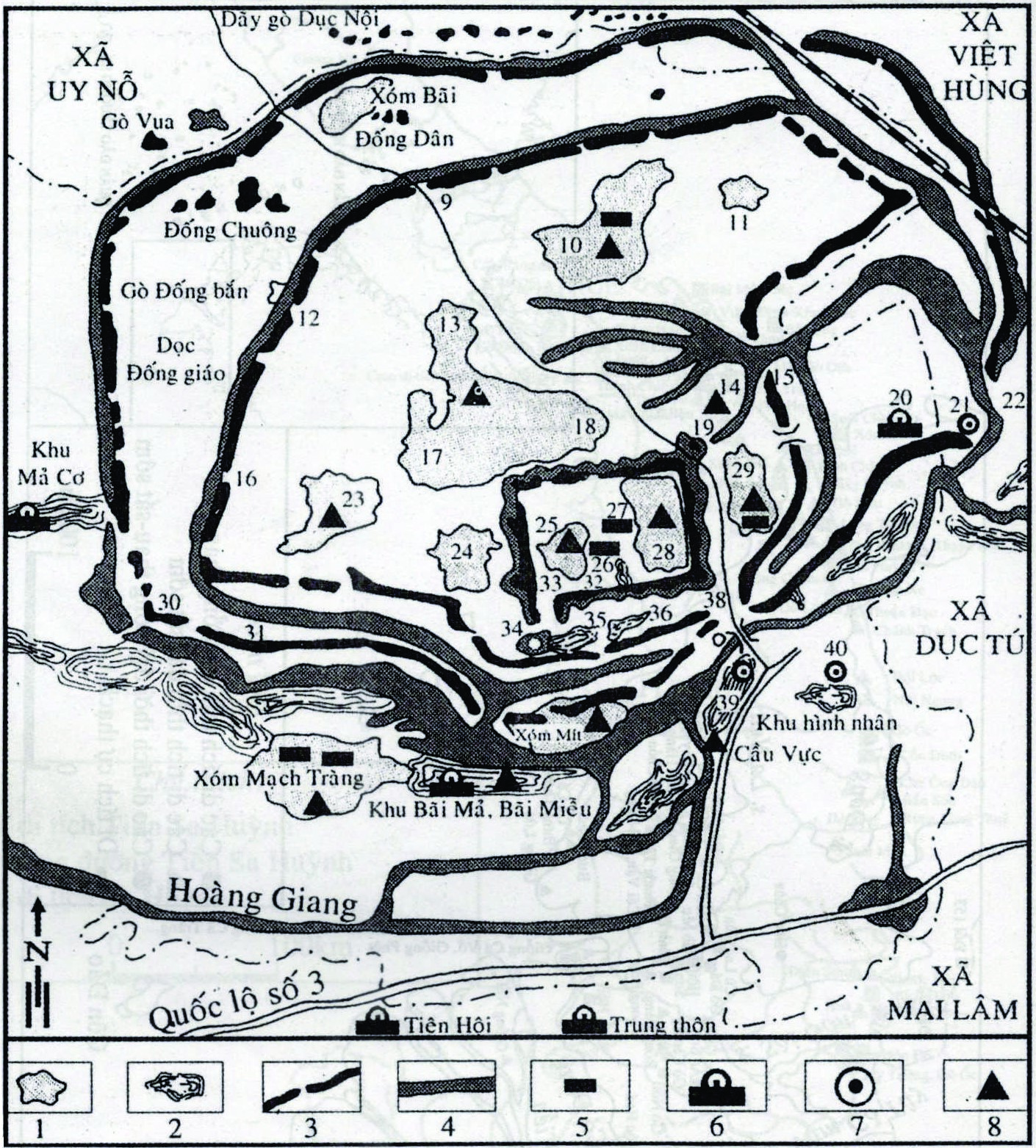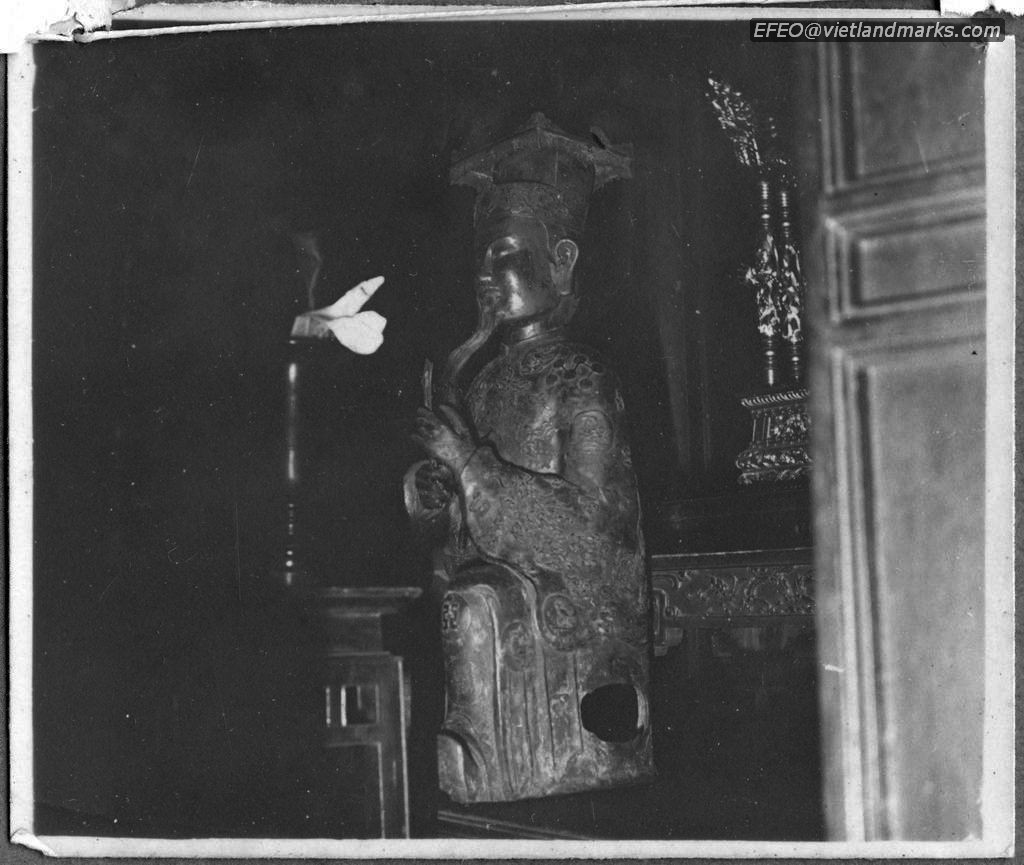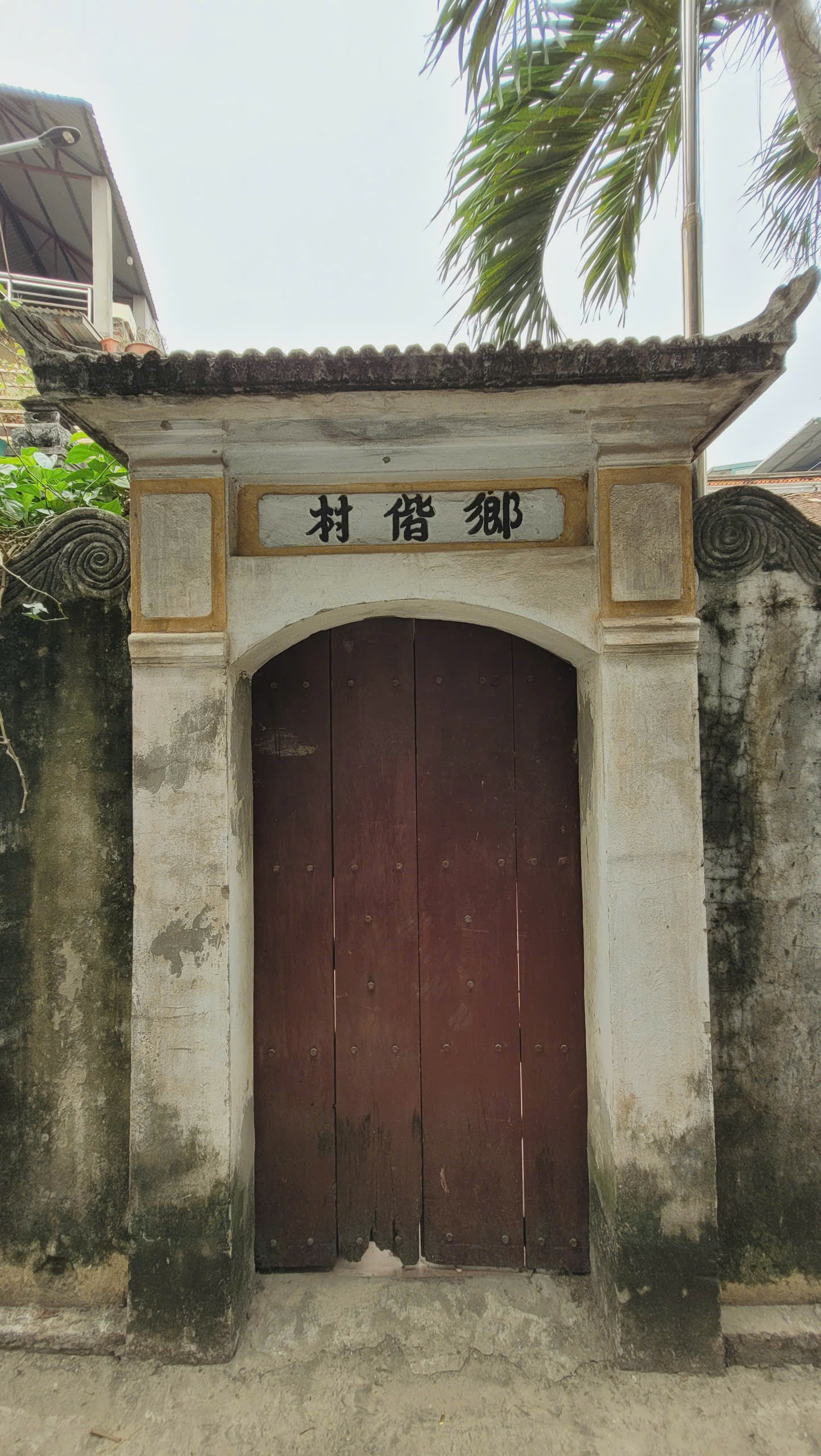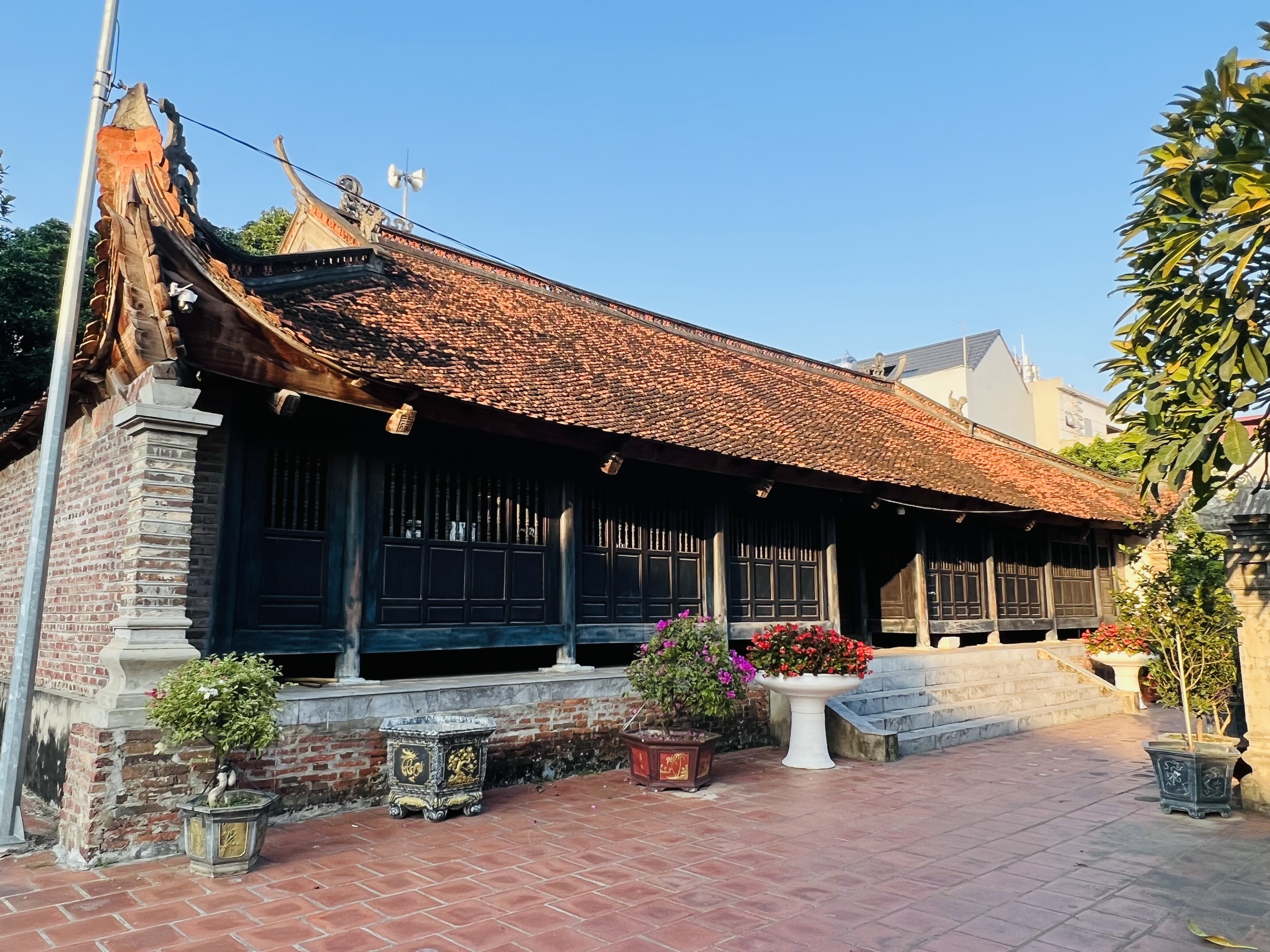
Cổ Loa Festival, also known as the " Bát xã hộ nhi " festival, “Bát xã Loa thành” festival is a traditional festival that has been included in the National Intangible Cultural Heritage List in Decision No. 603/QD-BVHTTDL dated February 3, 2021 of the Ministry of Culture, Sports and Tourism. With typical values, expressing the identity, creativity, and cultural diversity of the "Bát Xã" (Eight Communes) community, worshiping the Holy Ancestor Emperor An Dương is expressed through the practice of rituals and beliefs in the ceremony and the festival parts.
 The community of “Bát Xã” residents worships the Holy Ancestor King An Dương (today includes 8 villages in 3 communes: Cổ Loa, Văn Thượng, Mạch Tràng, Sằn Giã, Ngoại Sát, Đài Bi, Cầu Cả, Thư Cưu) is the cultural subject – the creative subject, practicing Cổ Loa festival. In which, the Cổ Loa village community (including 12 hamlets: Nhồi Trên, Nhồi Dưới, Lan Trì, Gà, Dõng, Vang, Hương, Thượng, Bãi, Chợ, Chùa, Mít) plays the main role in running rituals and festive activities.
The community of “Bát Xã” residents worships the Holy Ancestor King An Dương (today includes 8 villages in 3 communes: Cổ Loa, Văn Thượng, Mạch Tràng, Sằn Giã, Ngoại Sát, Đài Bi, Cầu Cả, Thư Cưu) is the cultural subject – the creative subject, practicing Cổ Loa festival. In which, the Cổ Loa village community (including 12 hamlets: Nhồi Trên, Nhồi Dưới, Lan Trì, Gà, Dõng, Vang, Hương, Thượng, Bãi, Chợ, Chùa, Mít) plays the main role in running rituals and festive activities.

The festival is held for 2 days (May 5 - 6), the 6th day is the main festival, on a large scale, with close coordination between Hanoi's state management agencies and the Thang Long - Hanoi Heritage Conservation Center, Management Department of Cổ Loa Vestige Site, Đông Anh District Party Committee - People's Committee, Cổ Loa Commune Party Committee - People's Committee, authorities at district - commune levels, community residents in villages and hamlets have festival activities and has become an important and major festival of the country.
Cổ Loa Festival is a major festival in the region. Eight communes work together to organize the festival with solemn procedures and rituals that have been carefully prepared by the people many months before the festival, which usually takes place from November to December of the previous year at the latest. Preparations for the festival are as follows:
Electing (recommending) Quan Đám (Thủ từ) conducted the selection 2 Quan Đám to take care of the "clean grass - red incense" of Thượng temple and the temple of Princess Mỵ Châu.
 The Eight Commune Council meeting was also held in early December, after the election of Quan Đám. Meeting to assign tasks to organize Cổ Loa festival, based on the village and commune's rules, which are very strictly regulated such as practice of sacrifices, human resources to participate in the festival, palanquin procession, and preparation of sacrifices, perform rituals: “bao sái”, horse procession ceremony, cleaning communal houses, temples....
The Eight Commune Council meeting was also held in early December, after the election of Quan Đám. Meeting to assign tasks to organize Cổ Loa festival, based on the village and commune's rules, which are very strictly regulated such as practice of sacrifices, human resources to participate in the festival, palanquin procession, and preparation of sacrifices, perform rituals: “bao sái”, horse procession ceremony, cleaning communal houses, temples....
Division of tasks: Cổ Loa commune (Cổ Loa village) plays the role of directing, organizing the festival, drafting "Chúc Văn" (speech of praise), being the celebrant and appointing Đông xướng; Văn Thượng "Reading the Oration"; Mạch Tràng village chose Tây xướng; Ngoại Sát acts as "Củ Soát " to check the sacrifices and offerings of the communes brought to the king; Cầu Cả village is "Phủng Chúc" (ie brings the oration); Sằn Giã, Đài Bi, Thư Cưu villages “Phủng tước” (offering wine) and "Phủng Hương" (offering incense). The reading of the "Chúc Văn" in the "nam quan" ceremony was assigned to Văn Thượng village. According to the old custom of Cổ Loa, there were four “Quan Đám” and eight “lang cai”, these people would split up to take care of the work at Bà Chúa Temple, Ngự Triều Di Quy communal house and Thượng temple, including the ritual of displaying worship objects and “nghi trượng” ( Usually during the festival, they take it out in the morning and put it back in the evening). This is called “bài sáp” (people participating in “lang cai” as a rule must be 50 years old or older). Each village nominates one person to participate in the “bồi bái” and direct the procession by “bài sáp” group.
 Practicing sacrifices and processions: Practice for about 4 to 5 days near the end of December before the festival.
Practicing sacrifices and processions: Practice for about 4 to 5 days near the end of December before the festival.
Reading Ceremony of “Mục lục” (Văn tế): Previously written by Tiên Chỉ from Cổ Loa village (Tiên Chỉ and Thứ Chỉ are dignitaries, educated, and knowledgeable in the village) and read on the evening of the 6th of the first lunar month. Since 1990, it was read by Quan Đám on the night of the 30th day of the twelfth lunar month at the main hall of Thượng Temple, praising the merits of the Saint (An Duong Vuong), wishing the villagers peace and safety.
Ritual and reading method: There are three main readers, three secondary readers (the secondary reader immediately repeats the sentence the main one has just read), and at the same time, these two groups will take turns reading each paragraph, the reader kneels and faces the incense burner, the listener sits on both sides and below. “Mục lục” is a rhyming poem that about the king's merits and achievements in building the country. Reading “Mục lục” once a year is to recall the history of Cổ Loa and “Bát Xã”.
On the 4th day of the first lunar month: Eight communes set up a traditional crossbow shooting competition field, set up a wrestling arena, arrange human chess in front of the yard of Ngự Triều Di Quy communal house, and play swing games...
On the 5th day of the first lunar month (Reporting the completed work for the festival): Eight communes rehearse sacrifices, ceremonies, games, and artistic performances during the festival. The rehearsal takes place all day, including 4 rounds of offerings to the festival, in the morning the first round of sacrifices is performed by Cổ Loa village, the next round is by “Bát Xã”, in the afternoon the first round is by “Bát Xã”, the next round is by Cổ Loa. All preparations for the main festival day have been completed.
The main festival day, the 6th day of the first lunar month, include 2 parts: the ceremony and the festival.
Ceremony: According to legend, when King An Dương chose Cổ Loa as the location for his capital, the people of Quậy village gave land to build the citadel. Therefore, although Quậy village is not named in the “Bát xã”, they are still natives of Cổ Loa, so they were invited to the festival and had the “Mật khẩn” reading ceremony on the upper mat, other villages had to welcome them. The welcoming group consisted of 15 elders from “Anh Cả Quậy” group to Cầu Cung. At this time, 15 elders of Cổ Loa village wore sacrificial clothes including 01 “trống khẩu”, 01 “kiểng”, 1 golden parasol to cover the ceremony, 02 soldiers to carry the ceremony welcomed and received offerings from “Anh Cả Quậy” group into the Thuong temple for the ceremony and arranged them to sit on the upper mat.
From early morning, communes carry their palanquins to Cổ Loa village in two directions. The west (right side of Thượng Temple) focuses on Outer Rampart, including villages: Mạch Tràng, Sằn Giã, Đài Bi, Cầu Cả. The east (left side of Thượng temple) focuses on Sa market, including Văn Thượng - Ngoại Sát - Thư Cưu villages. At 7:00 a.m., according to the commanding drum, the two processions entered the Thượng temple. When they reached the west end of the lake, the two groups merged into one and lined up in the order of Văn Thượng - Mạch Tràng - Sằn Giã - Ngoại Sát - Đài Bi - Cầu Cả - Thư Cưu. The procession entered the Upper Dragon yard in the following numerical order: East side: Văn Thượng, Sằn Giã, Đài Bi, Thư Cưu; West side: Cổ Loa, Mạch Tràng, Ngoại Sát, Cầu Cả. After the sound of the commanding drum, “Anh Cả Quậy” went in to offer the ceremony first, then Bát Xã took turns offering the ceremony at the king's palace.
 The two Elders beat the big drum and gong in 3 rounds, 9 times each to open the festival. “Anh Cả Quậy” read congratulations, offered sacrifice and read “mật khẩn”, which was performed on the upper mat in front of the temple door.
The two Elders beat the big drum and gong in 3 rounds, 9 times each to open the festival. “Anh Cả Quậy” read congratulations, offered sacrifice and read “mật khẩn”, which was performed on the upper mat in front of the temple door.
 Next was Hội đồng ceremony in Cổ Loa, which took place for more than two hours through 67 reading times. This is the most important ritual in the ceremony of the Cổ Loa festival, performed by the elderly men for the purpose of welcoming and inviting the god to enjoy the offerings, and at the same time is an opportunity for the villagers to praise the god and express their gratitude to the gods, hope that the gods will bless the villagers with peace, happiness, and a peaceful country.
Next was Hội đồng ceremony in Cổ Loa, which took place for more than two hours through 67 reading times. This is the most important ritual in the ceremony of the Cổ Loa festival, performed by the elderly men for the purpose of welcoming and inviting the god to enjoy the offerings, and at the same time is an opportunity for the villagers to praise the god and express their gratitude to the gods, hope that the gods will bless the villagers with peace, happiness, and a peaceful country.
 After the Hội đồng ceremony, there are Eight communes’s processions of palanquin. Starting from Thượng Temple, the palanquin of Cổ Loa village takes the lead, then the palanquins of Văn Thượng, Mạch Tràng, Sằn Giã, Ngoại Sát, Đài Bi, Cầu Cả, Thư Cưu villages respectively. The procession moves from the Rồng Thượng, Rồng Hạ yards, to the temple gate, then around Ngọc-well lake to the crossroads where the procession of Cổ Loa village goes straight to Ngự Triều Di Quy communal house. In the afternoon, Cổ Loa village sacrifices at the communal house, then carries a palanquin to the temple.The other villages’ processions move to their own communal house and continue to hold their festival from the 8th to the 16th of January.
After the Hội đồng ceremony, there are Eight communes’s processions of palanquin. Starting from Thượng Temple, the palanquin of Cổ Loa village takes the lead, then the palanquins of Văn Thượng, Mạch Tràng, Sằn Giã, Ngoại Sát, Đài Bi, Cầu Cả, Thư Cưu villages respectively. The procession moves from the Rồng Thượng, Rồng Hạ yards, to the temple gate, then around Ngọc-well lake to the crossroads where the procession of Cổ Loa village goes straight to Ngự Triều Di Quy communal house. In the afternoon, Cổ Loa village sacrifices at the communal house, then carries a palanquin to the temple.The other villages’ processions move to their own communal house and continue to hold their festival from the 8th to the 16th of January.
 Festival: Cổ Loa Festival has a rich and attractive system of folk games and performances containing cultural beauty and traditional values, typically: crossbow shooting, swinging, wrestling, Human chess, opera singing, water puppetry... attract a large number of people from all walks of life to participate.
Festival: Cổ Loa Festival has a rich and attractive system of folk games and performances containing cultural beauty and traditional values, typically: crossbow shooting, swinging, wrestling, Human chess, opera singing, water puppetry... attract a large number of people from all walks of life to participate.



 Cổ Loa Festival contains the value of folk knowledge. Rituals, processions, customs, games, performances, and cuisine are scientific treasures about the value of people's thinking from ancient times until now. The festival is also an opportunity to educate the young generation's gratitude for the merits of King An Dương for building Âu Lạc country, building citadels, making Liên Châu crossbows to fight against enemies, defending the country and growing wet rice. At the same time, educate young people in patriotic traditions, always be vigilant against all plots against independence and building socialism by hostile forces in the current period.
Cổ Loa Festival contains the value of folk knowledge. Rituals, processions, customs, games, performances, and cuisine are scientific treasures about the value of people's thinking from ancient times until now. The festival is also an opportunity to educate the young generation's gratitude for the merits of King An Dương for building Âu Lạc country, building citadels, making Liên Châu crossbows to fight against enemies, defending the country and growing wet rice. At the same time, educate young people in patriotic traditions, always be vigilant against all plots against independence and building socialism by hostile forces in the current period.
Previously, Cổ Loa Festival was held regularly from every 3 to 5 years for 12 days, from January 6 to 18, if it was the year of " phong đăng hòa cốc", Cổ Loa opened a very big festival. Today, Cổ Loa festival is held annually every year. CỔ Loa Festival recreates traditional folk rituals and games. We invite people and tourists from all over to attend the 2023 Co Loa Spring Festival to pray for health and peace.
MANAGEMENT DEPARTMENT OF CỔ LOA VESTIGE SITE








